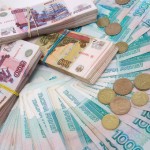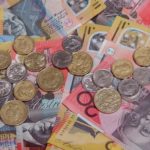Gold recovered partially from hefty losses as investors covered short bets after Swiss voters said “no” in a referendum to change central bank policy for gold reserves. Copper slid to a 4-1/2-year low, led by a rout in oil prices and further pressured by downbeat factory data from Europe and China. Silver rebounded from the lowest in five years.
Comex gold for delivery in February was down 0.20% at $1 173.2 per troy ounce at 12:34 GMT, having earlier declined to $1 141.7 an ounce, the lowest since November 7th. The precious metal settled 1.84% lower on Friday at $1 175.5 an ounce, closing the week down 1.9%. Prices fell for a third month in November.
The precious metal recovered from a three-week low as investors covered shorts bets and the US dollar eased against a basket of six major peers. However, the market remained pressured, poised for more downside, after Swiss people cast a decisive “no” vote in a referendum to ban the Swiss National Bank from selling its gold reserves and require the central bank to back at least 20% of its assets with the precious metal, from nearly 8% previously.
The proposal met broad disagreement, with 77% of participants voting against the measure. A “yes” vote would have led to the purchase of 1 500 tons of gold over the next five years, which according to analysts could have resulted in a short to mid-term gain of $50 in prices.
Demand outlook for the precious metal also took a hit as oil prices fell to the lowest in five years, easing concerns of inflation. The Organization of the Petroleum Exporting Countries reached a collective decision not to cut output despite global oversupply, resisting calls from smaller producers to address the recent price rout by reducing production.
Gold is headed for the first back-to-back annual drop since 2002 as the Federal Reserve wrapped up its unprecedented Quantitative Easing program and an interest rate hike is expected at some point in 2015. Diverging monetary policies between the Federal Reserve and other central banks, including the ECB and BOJ, have kept the dollar supported near the highest level in four and a half years, weighing on dollar-denominated commodities across the board.
The US dollar index for settlement in December stood at 88.130 at 12:38 GMT, down 0.38% on the day, having risen to 88.505 earlier in the session, an inch below November 24th’s 4-1/2-year high of 88.515.
Reflecting downbeat sentiment toward the precious metal, assets in the SPDR Gold Trust, the biggest bullion-backed ETF, slid to 717.63 tons on Friday, the lowest since September 2008. The fund hasnt seen an inflow since November 17th.
Copper
Copper slid to the lowest since mid-2010, following a decline in oil prices to the least since 2009, as manufacturing activity growth in China and Europe stalled.
Comex copper for delivery in March fell 0.26% to $2.8370 per pound by 12:33 GMT, having earlier fallen to $2.7775, the lowest since June 2010. The industrial metal settled 3.79% lower on Friday at $2.8445, closing the week 6% lower.
Manufacturing activity growth in China was almost non-existent in November, according to data by the National Bureau of Statistics. The Chinese manufacturing PMI fell to 50.3 last month from 50.8 in October, trailing projections for a drop to 50.5.
A separate private report by HSBC and Markit Economics, which focuses on smaller privately-held enterprises, showed that expansion in Chinese factory output came to a halt in November. The HSBC Manufacturing PMI registered at 50.0, confirming a preliminary reading, as manufacturing production fell for the first time since May. There was a moderate increase in total new business but new export growth slowed for a second consecutive month.
Hongbin Qu, Chief Economist, China & Co-Head of Asian Economic Research at HSBC commented on the report: “Todays data suggest that the manufacturing sector lost momentum and point to weaker economic activity in November. The PBoCs rate cuts, delivered on the 21st November, will help to stabilise property and manufacturing investment in the coming months. We continue to expect further monetary and fiscal easing measures to offset downside risks to growth.”
In Europe, Italys economy contracted by an annualized 0.5% in the third quarter, while factory activity slowed for a second straight month. Frances manufacturing sector also remained in the contraction zone, albeit posting a better-than-expected figure, while Germany unexpectedly slid below the level 50 threshold. The Eurozone as a whole saw manufacturing activity hardly grow, with the corresponding PMI coming in at 50.1 from 50.4 in October led by robust growth in Spains factory production.
Market players now awaited cues from the US. The Institute for Supply Management is expected to report that its manufacturing PMI slid to 57.9 in November from 59.0 in October, while a separate report by Markit Economics is likely to show a slightly faster pace of growth.





